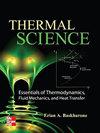A comparative study on 3E (energy, exergy and economic) analysis of solar PV operated dome-shaped solar stills
IF 1.1
4区 工程技术
Q4 THERMODYNAMICS
引用次数: 0
Abstract
The present investigation centres on the empirical examination of a solar photovoltaic (PV) system that is integrated with a dome-shaped solar still (DSSS) in order to facilitate the process of desalination. The objective is to increase the production of freshwater through the utilisation of saline water at elevated temperatures. The assessment of the DSSS system's efficacy is conducted through the examination of various parameters, including water yield, energy, exergy, concentrator performance, and economic feasibility. The study's results demonstrate that the DSSS system's water yield, energy, and exergy were evaluated under varying inlet temperatures and mass flow rates. The study recorded the water yield, energy, and exergy at 4.73, 4.27, and 4.91 l/m?, respectively, with respect to the ambient inlet temperature. The water yield was observed to range from 6.9 to 7.7 litres per square metre under different input temperatures and air mass flow rates. The DSSS system's energy and exergy efficiency were evaluated, indicating encouraging results for various inlet air temperatures. Furthermore, the economic evaluation revealed that the rate of freshwater production was cost-effective in comparison to conventional solar stills. In summary, this research offers empirical proof of the efficacy of a solar photovoltaic-powered dome-shaped solar still for the purpose of desalination. It emphasises enhancements in the output of fresh water, energy and exergy efficiency, and the economic viability of this technology.太阳能光伏运行的圆顶型太阳能蒸馏器3E(能源、能源和经济)分析比较研究
本研究的中心是对一个太阳能光电系统进行实证检验,该系统与一个圆顶形太阳能蒸馏器(DSSS)结合在一起,以促进海水淡化过程。目标是通过在高温下利用盐水来增加淡水的产量。对DSSS系统效能的评估是通过检查各种参数来进行的,包括产水量、能量、火用、浓缩器性能和经济可行性。研究结果表明,在不同的进口温度和质量流量下,对DSSS系统的产水量、能量和火用进行了评估。研究记录的产水量、能量和用能分别为4.73、4.27和4.91 l/m。,分别相对于环境入口温度。在不同的输入温度和空气流量下,每平方米的水量由6.9至7.7升不等。对DSSS系统的能量和能源效率进行了评估,表明在不同的入口空气温度下取得了令人鼓舞的结果。此外,经济评价显示,与传统的太阳能蒸馏器相比,淡水生产的速度具有成本效益。总而言之,这项研究提供了太阳能光伏发电的圆顶型太阳能蒸馏器用于海水淡化的有效性的经验证据。它强调提高淡水产量、能源和能源效率以及这项技术的经济可行性。
本文章由计算机程序翻译,如有差异,请以英文原文为准。
求助全文
约1分钟内获得全文
求助全文
来源期刊

Thermal Science
工程技术-热力学
CiteScore
2.70
自引率
29.40%
发文量
399
审稿时长
5 months
期刊介绍:
The main aims of Thermal Science
to publish papers giving results of the fundamental and applied research in different, but closely connected fields:
fluid mechanics (mainly turbulent flows), heat transfer, mass transfer, combustion and chemical processes
in single, and specifically in multi-phase and multi-component flows
in high-temperature chemically reacting flows
processes present in thermal engineering, energy generating or consuming equipment, process and chemical engineering equipment and devices, ecological engineering,
The important characteristic of the journal is the orientation to the fundamental results of the investigations of different physical and chemical processes, always jointly present in real conditions, and their mutual influence. To publish papers written by experts from different fields: mechanical engineering, chemical engineering, fluid dynamics, thermodynamics and related fields. To inform international scientific community about the recent, and most prominent fundamental results achieved in the South-East European region, and particularly in Serbia, and - vice versa - to inform the scientific community from South-East European Region about recent fundamental and applied scientific achievements in developed countries, serving as a basis for technology development. To achieve international standards of the published papers, by the engagement of experts from different countries in the International Advisory board.
 求助内容:
求助内容: 应助结果提醒方式:
应助结果提醒方式:


